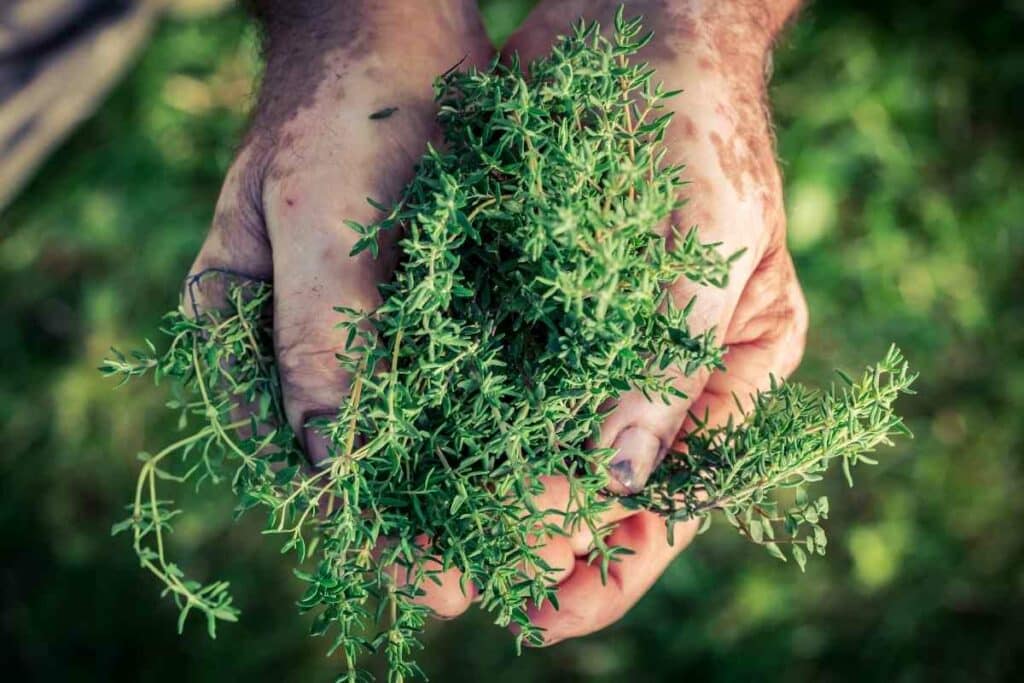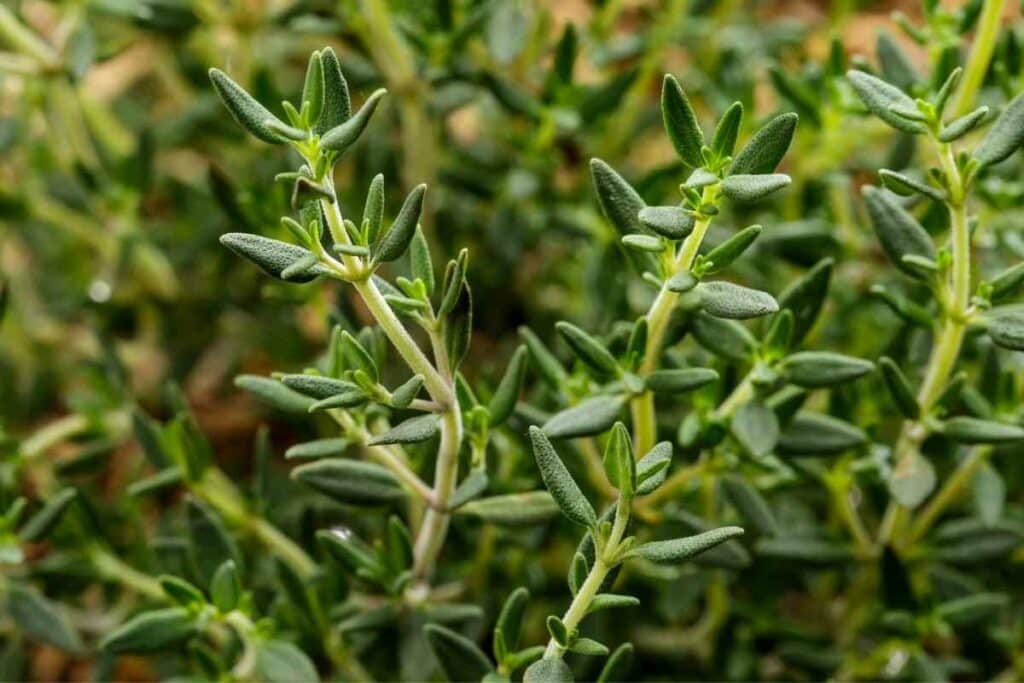If you’re looking to propagate thyme from cuttings, you’re in luck, because this is reasonably easy to do, and you’ll end up with a healthy, happy thyme plant to enjoy.
Thyme makes a delicious addition to many meals, and it’s a staple of a kitchen cupboard and a must-have for your herb garden.
You can propagate thyme using many methods, but water is one of the easiest ways. You just need a healthy thyme cutting, some water, and a little container with drainage holes and some good potting soil. Rooting hormone may make this job easier and more successful, but it is not a necessary component.
Step 1 – Get a Cutting
It takes quite a long time to grow a full thyme plant from a cutting, so before you start, be prepared to wait for about a year before you’re eating your own thyme.

If that seems too long, get a plant from a garden center. If you don’t mind waiting, get hold of a cutting and get started!
You want a cutting to be between four and six inches long, as this increases the chances of the plant having enough energy to root properly.
Early fall is usually the best time to plant thyme cuttings, but you can take a cutting from a plant at any time during its growing season (spring to fall), so don’t wait if you are very keen.
From Experience: You can always take further cuttings later if it doesn’t flourish.
Step 2 – Strip The Lower Stem
Before you put the cutting in water, you need to remove any leaves that would be below the surface of the water.
The bottom two inches of the stem should be fine.
If you don’t remove these leaves, they will rot in the water, and will stop the plant from rooting properly.
Removing them makes space for the new roots to form, and reduces the risk of the cutting rotting.
Step 3 – Apply Rooting Hormone (Optional)
If you have rooting hormone, now is the time to use it.
This stimulates root growth in plants, encouraging them to put out new roots and increasing your chances of successfully propagating the thyme from cuttings.
All you need to do is dip the end of the thyme’s stem in the rooting hormone, and make sure that some clings to it.
This is a good and inexpensive way of increasing your plant’s chances of rooting.
It is important to note that some kinds of rooting hormones are sold for ornamental plants only, and some require you to wait a year before consuming any part of the plant.

Check the instructions that come with the hormone and don’t use your thyme before the allotted period has passed.
Some rooting hormones are fine for edibles and don’t require you to wait; these are the safest to use.
It is important to note that if you are planning to propagate the thyme in water as described next, you may choose not to use rooting hormone.
Your Choice: Some people say that it is not as effective, but you can make this decision for yourself, or experiment with both options and see which is the most effective for thyme!
Step 4 – Put The Cutting In Water
Put your thyme cutting in a glass of fresh water, and make sure that the full two inches of bare stem are underneath the level of the water.
It is best to use a clear container so that you can watch for root development, but be aware that roots can take up to four weeks to start showing.
Hopefully, you will start to see some pale, very thin strands protruding from the bare stem of the thyme.
You will need to refresh the water in the glass regularly to stop it from turning stagnant and rotting:
- To do this, lift the cutting out and place it on a clean surface.
- Tip the old water away, rinse the glass, fill it with fresh water, and return the cutting to it.
- Do this every few days, as you don’t want the cutting to rot.
- Once the roots have started to develop, keep an eye on them and wait for them to grow thicker and stronger.
Step 5 – Transplant Into Soil
Once your thyme plant’s roots are strong enough to withstand being transplanted, you need to move the plant into soil.
Prepare a nice container full of soil, with good drainage holes, and then make a hole in the center.
Put the thyme cutting into the hole, and gently fill it with soil, making sure that there is plenty of contact between the soil and the new root system.

This will encourage the plant to spread its roots through the pot and start to establish itself.
Often, it is a little tricky to get cuttings propagated in water to cope with the transition into soil, so be gentle.
Once the cutting is in place, water lightly to help settle the soil around the roots, and place your cutting in bright but indirect light to let it recover.
Step 6 – Let It Grow
Your thyme plant is now ready to start growing properly.
It will spread its roots through the soil, take up nutrients, and begin building itself up.
Keep the plant indoors while it gets strong, and then harden it off before planting it outside (if necessary).
It often takes six to eight weeks before you will start to see visible growth.
The thyme is still settling in and establishing its roots during this period, but if you have been successful, it should start to grow after a couple of months.
Works Fine: If you are not planting your thyme outside, be prepared to move it into a larger container once it is growing well.
Conclusion
You now know how to propagate thyme from cuttings, and hopefully you’re inspired to make a start!
If it goes wrong the first time, don’t be afraid to try again; you aren’t losing anything.
You can also try rooting thyme directly in soil if you are having trouble getting a water cutting to take.
